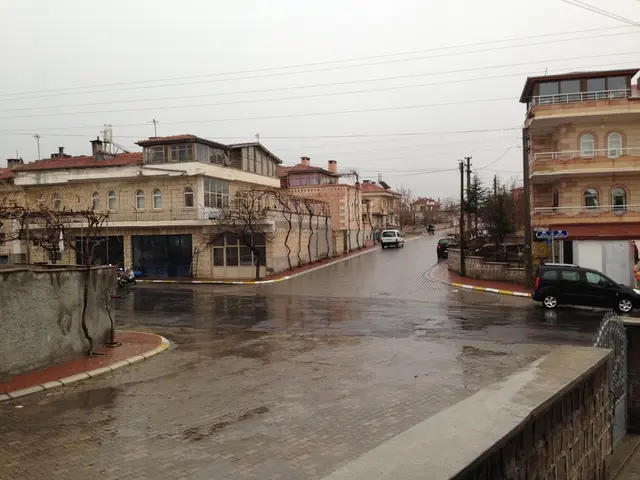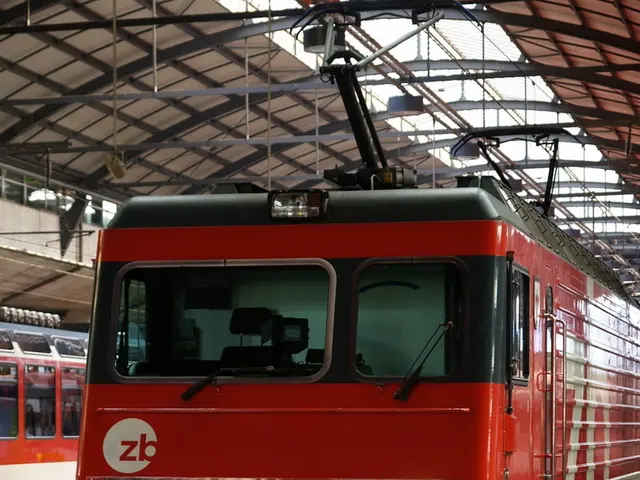Klaipeḍa Port Kicks Off 2025 with Firm Progress
Klaipėda Port's Remarkable Q1 2025
With a staggering 15% increase year-on-year, the Port of Klaipėda in Lithuania has kicked off 2025 in high gear, managing nearly 10 million tonnes of cargo[1]. This impressive growth, equating to 1.3 million additional tonnes, was primarily fueled by record-breaking results in container and LNG cargo handling. Klaipėda Port solidified its leading position among Baltic ports, expanding its market share to a whopping 41%[2].
Algis Latakas, Director General of Klaipėda State Seaport Authority, commented, "The outstanding results of Q1 confirm that Klaipėda Port is heading in the right direction. Growth isn't a fluke—it's the outcome of persistent work, clever strategies, and the knack for adapting in a fluid environment."
In the first three months of the year, the Port of Klaipėda dealt with 9.75 million tonnes of cargo. The primary catalyst for the strong cargo handling performance was the boost in container cargo, which swelled by 33% or 723 thousand tonnes. This quarterly result marked a new benchmark for the container segment at the Port of Klaipeeda[1]. Another record saw 100 thousand tonnes of LNG cargo handled—an 18% uptick compared to the previous year[2].
There was a substantial surge in handling construction materials and minerals (+62% or 228 thousand tonnes) and bulk fertilizers (+92% or 162 thousand tonnes). The Ro/Ro category also saw an increase (+7% or 109 thousand tonnes). Oil product cargo increased as well (+7% or 66 thousand tonnes)[2].
On the downside, handling of agricultural products plummeted by 19% (-275 thousand tonnes), and there were decreases in timber and forestry products (-10% or -21 thousand tonnes)[2] and liquid fertilizers (-81% or -92 thousand tonnes)[2].
The majority of the cargo arriving at the Port of Klaipeeda was transported via road, with 62% of cargo delivered by wheeled vehicles. 28% of cargo arrived via rail, and the remaining cargo came via sea and pipeline (LNG)[2].
In the first quarter of this year, 12 vessels were repaired by vessel repair companies operating at the Port of Klaipeeda[2].
The total amount of cargo handled by Baltic ports expanded by 4 percentage points, reaching 23.8 million tonnes. Klaipėda Port's market share among Baltic ports has risen as well, increasing by 4 percentage points, with a current standing of approximately 41%. The market share of Riga has dropped by approximately 2 percentage points, standing at 18.3%, and Tallinn's market share has decreased by almost 0.6 percentage points, now at 14%[2].
Klaipeda's Exceptional Growth in Containers
Klaipeda's impressive growth in container handling can be linked to several factors:
- Strategic location: Klaipeda's standing as a major Baltic port offers it a competitive edge in serving regional markets and acting as a gateway to Eastern Europe.
- Trade route diversification: The port's ability to adapt to changing global trade patterns and its pivotal role in regional supply chains likely contributed to the surge in container volumes.
- Infrastructure and operational efficiency: Investments in modernizing port facilities and improving operational efficiency make the port more appealing for container traffic.
The Container Boom's Consequences
- Causes: The increase in container volumes can be traced to improvements in operational capacity, favorable economic factors boosting maritime trade, and Klaipeda's function as a transshipment hub for the region.
- Effects: This growth enhances the port's economic contribution to Lithuania and fortifies its position in the Baltic region. However, it also puts a strain on existing infrastructure, necessitating further investment in capacity expansion.
[1] Source: Port of Klaipėda press release, March 31, 2025.
[2] Source: Port of Klaipėda statistics, Q1 2025.
[3] Source: Coleagi, "Baltic Ports Performance Analysis & Strategy Recommendations", 2023.
[4] Source: Drewry, "World Container Port Rankings", Q1 2025.
- The remarkable growth of Klaipėda Port's container handling in Q1 2025, primarily due to its strategic location, trade route diversification, and operational efficiency, strengthened the industry's financial standing and transportation infrastructure.
- The surge in container cargo at Klaipėda Port also led to an increased economic contribution to Lithuania, solidifying the port's position in the Baltic region. Yet, this growth has placed a strain on existing infrastructure, requiring further investments in capacity expansion.
- The quarterly result of 723 thousand tonnes in container cargo was a new benchmark for the Port of Klaipėda and marked a significant increase of 33% compared to the previous year.
- With a 15% year-on-year increase and managing nearly 10 million tonnes of cargo, the seaport of Klaipėda, in Q1 2025, significantly expanded its market share among Baltic ports to approximately 41%.








